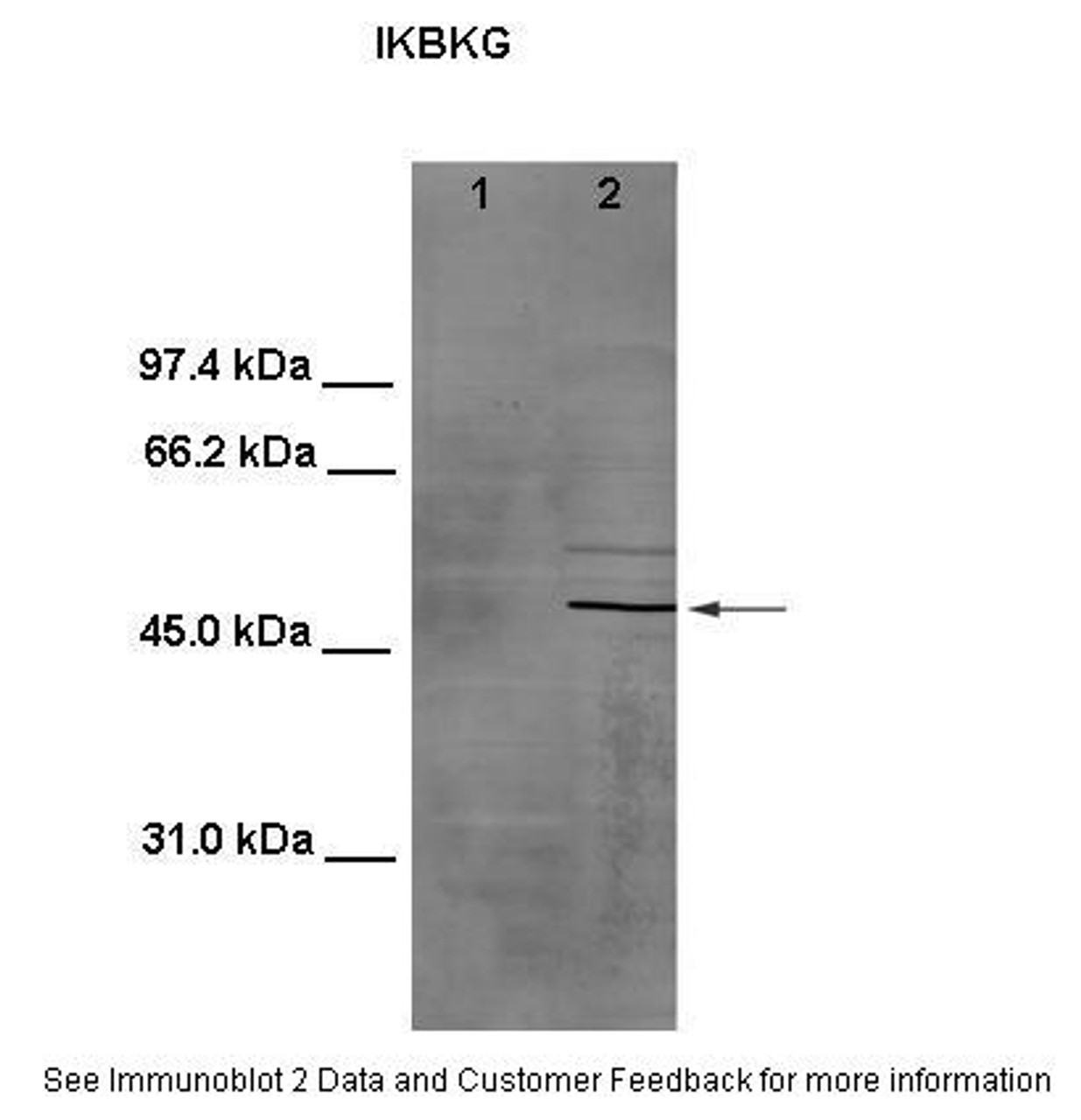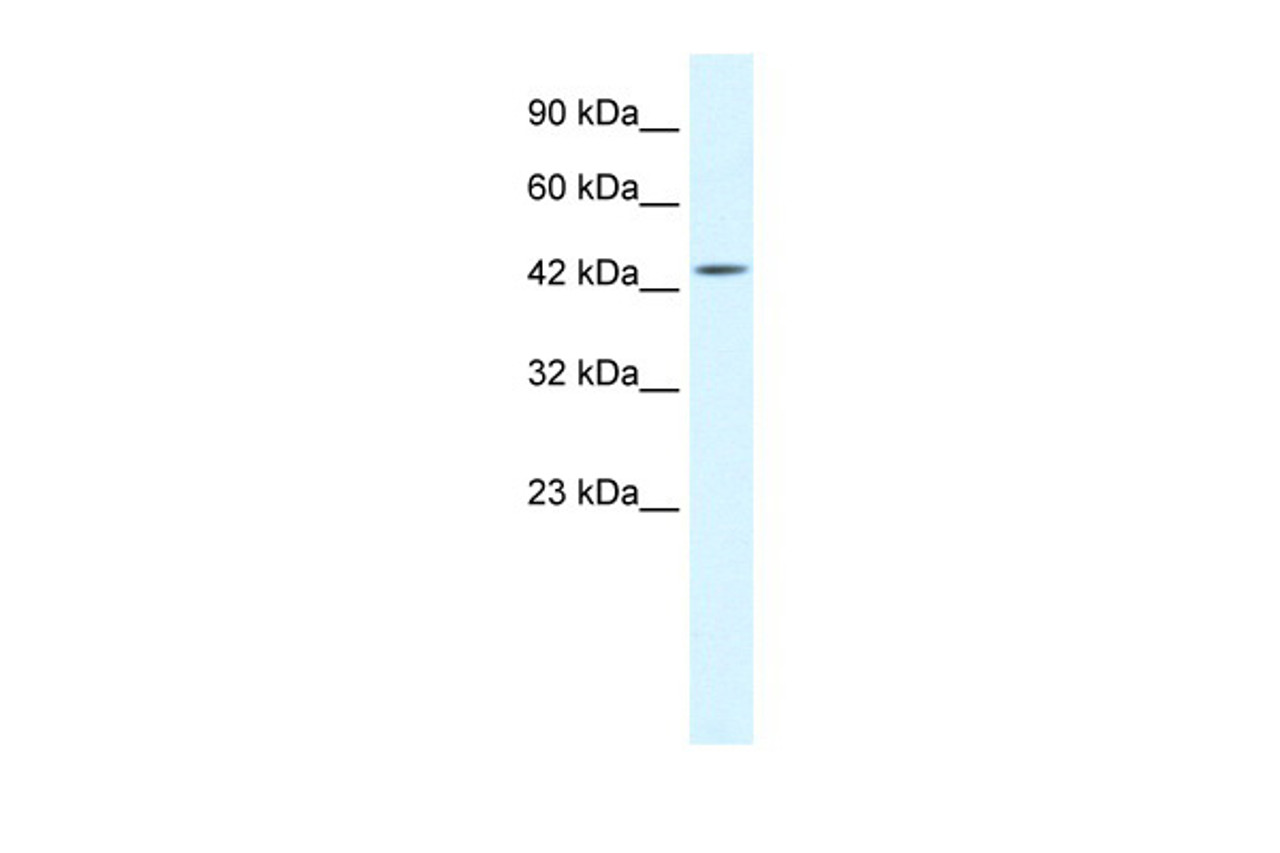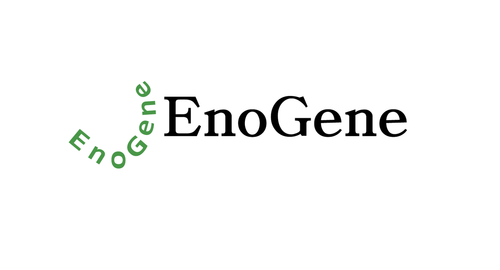Product Description
IKBKG Antibody | 27-263 | ProSci
Host: Rabbit
Reactivity: Human, Dog
Homology: N/A
Immunogen: Antibody produced in rabbits immunized with a synthetic peptide corresponding a region of human IKBKG.
Research Area: Cancer, Signal Transduction, Immunology, Apoptosis
Tested Application: E, WB
Application: IKBKG antibody can be used for detection of IKBKG by ELISA at 1:312500. IKBKG antibody can be used for detection of IKBKG by western blot at 1.25 μg/mL, and HRP conjugated secondary antibody should be diluted 1:50, 000 - 100, 000.
Specificiy: N/A
Positive Control 1: Cat. No. 1211 - HepG2 Cell Lysate
Positive Control 2: N/A
Positive Control 3: N/A
Positive Control 4: N/A
Positive Control 5: N/A
Positive Control 6: N/A
Molecular Weight: 48 kDa
Validation: N/A
Isoform: N/A
Purification: Antibody is purified by protein A chromatography method.
Clonality: Polyclonal
Clone: N/A
Isotype: N/A
Conjugate: Unconjugated
Physical State: Liquid
Buffer: Purified antibody supplied in 1x PBS buffer with 0.09% (w/v) sodium azide and 2% sucrose.
Concentration: batch dependent
Storage Condition: For short periods of storage (days) store at 4˚C. For longer periods of storage, store IKBKG antibody at -20˚C. As with any antibody avoid repeat freeze-thaw cycles.
Alternate Name: IKBKG, IP, IP1, IP2, FIP3, IPD2, NEMO, FIP-3, Fip3p, AMCBX1, ZC2HC9, IKK-gamma
User Note: Optimal dilutions for each application to be determined by the researcher.
BACKGROUND: Familial incontinentia pigmenti (IP) is a genodermatosis that segregates as an X-linked dominant disorder and is usually lethal prenatally in males . In affected females it causes highly variable abnormalities of the skin, hair, nails, teeth, eyes, and central nervous system. The prominent skin signs occur in 4 classic cutaneous stages: perinatal inflammatory vesicles, verrucous patches, a distinctive pattern of hyperpigmentation, and dermal scarring. Cells expressing the mutated X chromosome are eliminated selectively around the time of birth, so females with IP exhibit extremely skewed X-inactivation. Familial incontinentia pigmenti is caused by mutations in the NEMO gene and is here referred to as IP2, or 'classical' incontinentia pigmenti. Sporadic incontinentia pigmenti, the so-called IP1, which maps to Xp11, is categorized as hypomelanosis of Ito
 Euro
Euro
 USD
USD
 British Pound
British Pound
 NULL
NULL












